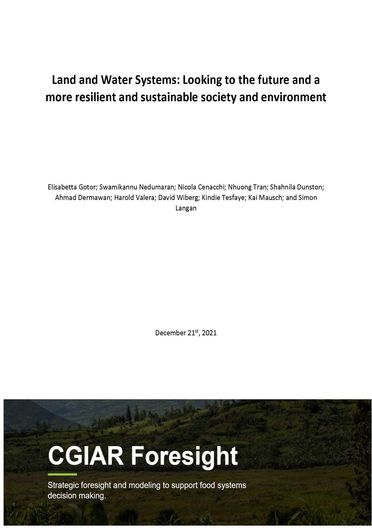Land and water systems: looking to the future and a more resilient and sustainable society and environment
Food, land, and water systems are facing unprecedented change. The world’s population is projected to grow to approximately 10 billion people by 2050, while aging and declining in some regions. Global average incomes are expected to keep increasing at a slow but steady pace. With increasing incomes and the ability of consumers to purchase more and better food in combination with population growth, food demand is projected to grow substantially over the next three decades. Meanwhile, demographic changes and economic development also drive urbanization, migration, and structural transformation of rural communities. At the same time changes to precipitation and temperature as well as the occurrence of extreme events driven by climate change are becoming more prevalent and impacting society and the environment. Currently, humanity is approaching or exceeding planetary boundaries in some areas, with over-use of limited productive natural resources such as water and phosphate, net emissions of greenhouse gases, and decreases in biodiversity.
Much is published about food and agriculture and the supporting/underpinning land and water systems, but no single source focuses regularly and systematically on the future of agriculture and food systems, particularly on the challenges and opportunities faced by developing countries. This working paper is part of an effort by the CGIAR foresight team to help fill that gap. The effort recognizes that there is much to learn from past experience, and there are clearly many urgent and immediate challenges, but given the pace and complexity of change we are currently experiencing, there is also an increasing need to look carefully into the future of food, land, and water systems to inform decision making today.

